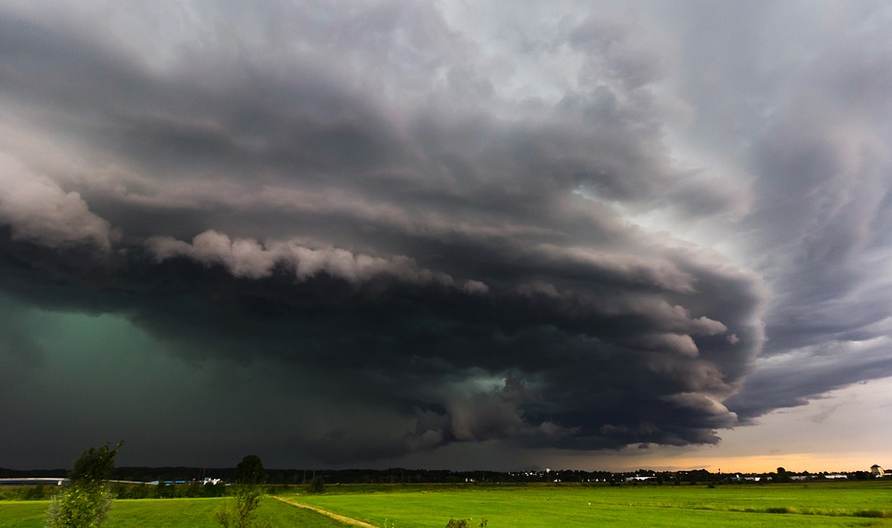Canada Derecho to be one of costliest convective storm losses: Aon

The Derecho type event that drove a line of severe thunderstorms across southern parts of the Canadian provinces of Ontario and Quebec last week has the potential to be one of the most expensive insurance industry losses from the convective storm peril in the country.
The severe thunderstorms struck last Saturday and at one point almost a million homes were left without power as the Derecho system rolled through the region.
Wind gusts of more than hurricane strength were recorded, with recordings made up to 132 km/h, while reports said “extensive damage” was experienced across the region, with property and infrastructure damage widespread.
The line of severe storms spanned roughly 621 miles (1,000km), and meteorologists said it constituted a rare derecho event.
Derechos are formed when a line of severe thunderstorms races across a country usually during the summer months and can cause severe winds at the frontal line, as well as tornadoes, hail, rainfall and other impacts.
As we explained, it was expected by our sources that the Derecho in Canada could cause hundreds of millions of Canadian dollars in insurance and reinsurance market losses, with the damage perhaps widespread and severe enough to cause a billion dollar industry loss event.
In its latest catastrophe report, insurance and reinsurance broker Aon’s Impact Forecasting unit has said preliminary estimates suggest the Derecho could be “one of the Top 5 or 10 costliest severe convective storm events on record for the Canadian insurance industry.”
The Derecho occurred during a week of severe thunderstorms and convective weather outbreaks across North America, that combined look set to deliver billion dollar losses to the insurance and reinsurance industry.
“An active stretch of spring severe weather again swept across parts of North America from May 19-26. A series of areas of low pressure impacted much of the eastern two-thirds of the United States during the period which left two people dead and dozens injured. The first EF3 tornado recorded in Michigan since March 2012 left extensive damage in the town of Gaylord on May 20. Aggregated U.S. economic and insured losses were each estimated into the hundreds of millions (USD),” Aon’s Impact Forecasting explained.
The broker’s catastrophe modelling and meteorology unit continued, “The financial toll across the United States during the period from May 19-25 was minimally expected to result in an aggregated insurance impact well into the hundreds of millions (USD); if not higher. The overall economic loss – which includes uninsured or underinsured damage costs – will be even higher.”
That suggests the potential for US losses to be over a billion from the past weeks convective storm activity, while in Canada it could become one of the largest catastrophe losses ever, Aon suggests.
“The derecho across the border in Canada that swept through multiple provinces and heavily populated metropolitan centers was anticipated to be a substantial event for the country’s insurance industry. The insured loss was very likely to end as one of the Top 5 or Top 10 costliest industry events for the severe convective storm peril on record. It may also end as one of the more expensive Canadian insured loss events on record regardless of peril,” the company said.
The United States has had a spring of vigorous severe thunderstorms and convective weather, with numerous tornado outbreaks and strong wind events, as well as large hail.
Overall, Aon says this will be another year where losses from the convective weather peril causes over $10 billion of insurance and reinsurance market losses.
“This continues an active stretch for the peril in the U.S. which has been consistently busy on a near weekly basis since early March. The country is once again on pace to well surpass the $10 billion insured threshold for the peril, which it has done in every year since 2008,” Aon’s Impact Forecasting explained.






